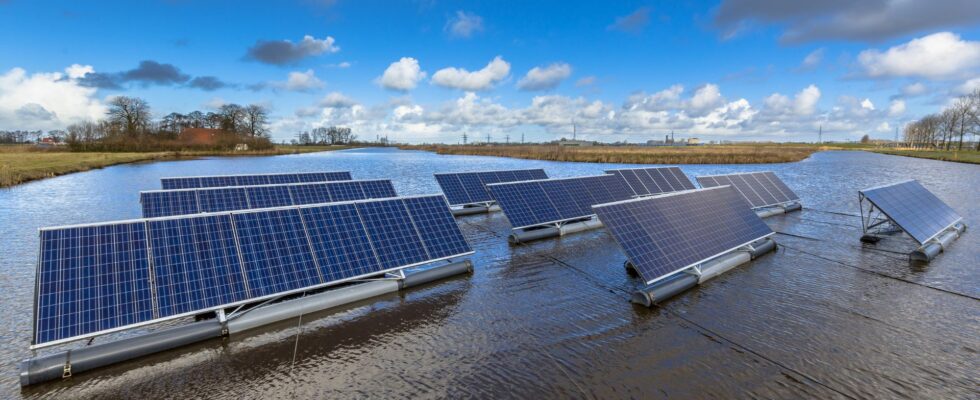Scientists estimate that floating solar panel installations could help achieve zero carbon by providing almost a third of the world’s energy. This is an idea that remains in the experimental phase for the moment.
A solution that could produce 9,400 Terawatt-hours (TWh) of electricity each year? For the authors of a study published on March 13, 2023 in Nature, this would be the usefulness of floating solar panels on water. For comparison, world electricity represents 22,800 TWh/year; this idea would therefore represent a third of them.
According to these scientists, who are also based on previous work, this system would have major advantages over solar panels installed on dry land:
- Being on the water would allow better cooling, avoiding overheating and therefore allowing to increase energy (which has been demonstrated in previous tests);
- This would also limit evaporation;
- This would avoid sacrificing parcels of solid land;
- This could be associated with hydroelectric systems;
- And there would be a geographical advantage: due to the proximity of ” most tanks of water with important centers of population, we find that 6,256 communities and/or cities in 124 countries, including 154 metropolises, could be self-sufficient », thanks to localized floating photovoltaic power plants.
Floating solar farms already exist, albeit in very limited numbers – this study proposing on the contrary to make them common installations all over the world. In China, for example, there is the Dezhou Dingzhuang floating solar farm. There are also some in the Netherlands.
Can floating solar panels have a negative impact?
It is difficult not to perceive the possible harmful side effects of such a system: what about biodiversity in these water reservoirs? The authors respond in particular by explaining that the panels could inversely prevent the development of toxic algae. But this simple argument remains very insufficient, because the question is indeed to protect the ecosystems from a possible attack.
The authors suggest that an ecological solution would be to impose a limit on the area covered by the installations: a maximum of 30% of the surface of the reservoir or 30 square kilometers of surface – the idea being to retain the data which implies the least space used.
It should also be noted that a study published in 2021 indicates that the presence of floating solar panels could reduce the impact of global warming on water.
According to the authors, in any case, this solution could lead dozens of countries to achieve the zero carbon objective. This still remains very theoretical, this floating system having still been little mobilized. And this would prove to be all the more expensive – where terrestrial solar panels have become a mastered technology -, in particular because it would be an engineering challenge (it would be a question of guaranteeing that the panels “follow” the Sun as on Earth) .
Subscribe to Numerama on Google News to not miss any news!
